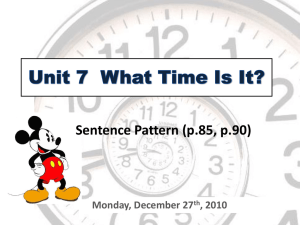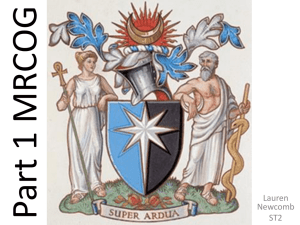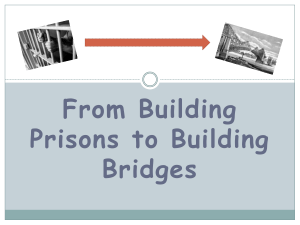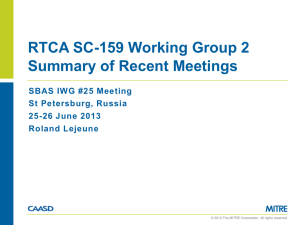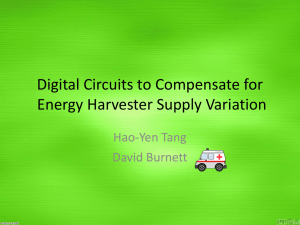walter_IWG26_L5ICD
advertisement
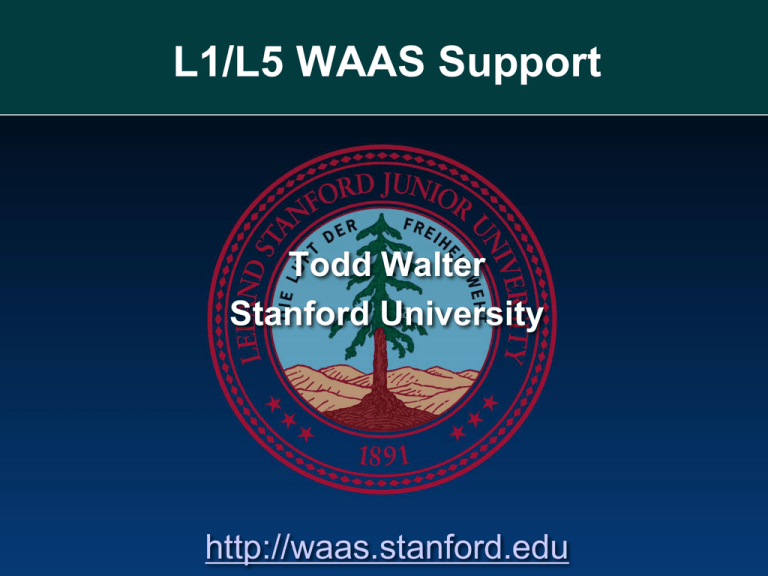
L1/L5 WAAS Support Todd Walter Stanford University http://waas.stanford.edu Key DFMC MOPS Components Operational goals (1.3) Equipment classes (1.4) Constellation assumptions (B) Equipment & tracking requirements (2.1, 2.2, 2.3) Environmental assumptions (2.4) Interference environment (C ) Test requirements (2.5) Antenna requirements (separate MOPS) Signal specification (A) L5 physical layer (A.2 & A.3) Message structure and content (A.4) 2 Protection Levels (J) Recently Agreed to L5 MOPS Changes Expanded PRN mask Removal of fast corrections Single satellite correction message Smaller quantization errors Alert message with DFRECIs When more than 51 SVs corrected Full DFREs can be sent in 2 messages Updatable DFRE table Support for more SBAS orbit types 3 ICD Topics Still Under Discussion L5 reversionary mode Optional ionospheric messages Extra clock states in the G matrix Separate state for each constellation Correlation of tropospheric error 4 Clock parameters in MT-12 like message as part of correction Identification of service regions Ephemeris content validation Authentication of service L5 Reversionary Mode The FAA is not pursuing ionospheric corrections on L5 L5/E5-only RAIM should provide lateral guidance for terminal through en route Other ANSPs may elect to define messages to permit vertical guidance in L1/E1-denied areas These messages are not required to support dual frequency vertical guidance 5 Separate Constellation Clock States SBAS corrections can align the time offsets between constellations May require separate clock terms Differences in signal structures and satellite filters can create receiver dependent biases Adding a clock state per constellation addresses dynamic range and biases Small increase in protection levels 6 Recommended by RTCA + EUROCAE Inter-GNSS Clock Parameters Clock offset states can be broadcast in MT-12 like message MT-12 currently only used for timing Not currently broadcast by WAAS Could also be applied to corrections to align GNSS timescales 7 Current offsets greater than dynamic range of the corrections Splits correction information across different messages Identification of Service Regions May want to assist user in finding SBAS with highest availability Interest expressed in specifying which SBAS to use in certain areas May want to broadcast information about other SBAS satellites Currently supported in L1, but not used Additional messages could be defined to meet these goals 8 Needs to be coordinated among SBASs Ephemeris Content Verification Addresses issue of ephemeris content change without IODE change Instead of IODE, correction message would contain a hash of full contents Needs a large number of bits to fully assure unique hash (>24) Adjacent ephemerides must have different hashes Requires more bits than easily available Looking into alternate methods to achieve goal Perhaps a low bit count hash with the IODE 9 Signal Authentication FAA is interested in having ability to authenticate SBAS signal Level of authentication to be studied Signal only Data contents Bandwidth requirements TBD May only require a message per minute May use Q-channel 10 Needs to be loss tolerant Key management is an issue Next Steps Document agreed upon ICD elements similar to appendices A & J of MOPS Exchange documents to ensure common understanding Comment on descriptions 11 Identify missing details Discuss options to address identified issues Update documentation with new agreements 12






